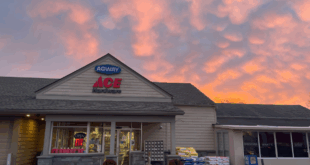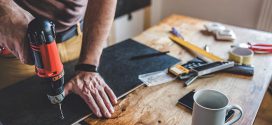Increasing transaction size is one of the easiest ways to increase profits, and one way to do it is to train employees on their role in the sales process. Training them on proper sales techniques and offering incentives around meeting sales goals will create a culture of selling that will drive higher profits. Here are 10 ways employees can help boost your average ticket size.
Take the clip-strip challenge. Clip-strips are effective cross-merchandising tools that will encourage add-on sales. To encourage more sales off these merchandisers, give employees the clip-strip challenge. Divide employees into teams and assign each team a department and a set number of clip-strips for that department. Then, have them determine items and placement for each clip-strip in their area. The team with the most sales of those items during a set time period gets free lunch or another incentive. The activity will get employees thinking through add-on sales and encourage them to be proactive about recommending them to customers.
Try the average transaction challenge. Get the entire team involved in add-on selling by getting them involved in the average transaction size challenge. Set monthly goals for the average transaction size you’d like to reach. Incentivize employees by offering a team prize, such as a cash bonus or a free lunch, if that goal is met. Make the sales goal clear and provide regular updates so the team can measure progress and build excitement. Critical to this challenge is providing the necessary training so all employees understand effective suggestive selling techniques and why it benefits the customer.
Start an item of the month challenge. Choose an item of the month you wish to promote, such as a seasonal product. After doing your due diligence to merchandise properly, set a sales goal for that item and challenge your staff to meet it. You can award individual employees who sell the most of that item (using the honor system of how many times they recommend a product and the customer purchases it) or the entire staff when you reach the goal. Post regular progress updates to build excitement.
Use POS prompts. Check with your point-of-sales system to see if you can set up prompts to remind cashiers to ask about add-on sales for certain items. For example, if a cashier scans a bucket of paint, a prompt would come up on the screen reminding them to ask if the customer needs a brush, roller or dropcloth. The cashier is your last chance to make the add-on sale and prompts are easy ways to train them on what items fill out a sale.
Utilize endcap programs. Endcaps are one of your most valuable transaction building tools, but they’re only effective if you utilize them to their full potential. Rotate them regularly (every 2 to 4 weeks) so customers always see something new. Make sure all employees understand why certain items make it on to the endcap and have them give careful attention to keeping shelves full, fronted and faced. A well-stocked shelf will generate more sales than a poorly stocked one.
Create POP/silent sellers. POP signage can be silent reminders of additional items customers may need to complete a project. In addition to vendor signage, you can create project checklists and place them strategically near common project destination items, such as plumbing fixtures. Personalize these checklists by including the name of an employee who is an expert in that category. For example, “John recommends these items when replacing a sink.” Staff will need the appropriate training to understand why those items are necessary for the project.
Audit your impulse area. Review the performance of items in your prime impulse merchandising areas, such as endcaps, dump bins, power aisle pallets and checkout displays. Did moving those items to impulse areas boost their sales performance? If not, should you replace them with something else? If an impulse item isn’t performing, make the best use of this valuable real estate by replacing it with something that does. Also make sure you are keeping this area fresh by rotating merchandise and including new items.
Review your service areas. Service counters are ideal places for impulse displays. Make periodic reviews of the items you’ve placed there to see how well they are selling. Look for common product add-ons, consumables and new products. Train staff working those service counters to call customers’ attention to those items. Also make sure the housekeeping for these impulse displays is impeccable and they aren’t cluttering up service counters or getting in the way of customers.
Focus on project training. Employees with a working knowledge of the top projects you can sell will be better equipped to create larger transaction sizes. Pick a handful of projects that you can ‘own’ and make sure your inventory will support them. Then, train staff on how to complete those projects and recommend the right products to complete the project. Use cross-merchandising and project checklists to support these projects.
Offer shopping carts or baskets. Customers pushing a shopping cart or carrying a basket are more likely to purchase more items. However, customers walking into the store with the intention of only picking up a few items may not even think about grabbing a basket. Train greeters to prompt customers to take a shopping basket. The prompt may be as simple as handing the customer a basket when they enter, framing it as an act of customer service. Be diligent about keeping a full supply of baskets near the entrance.
Close the feedback loop from team and customers. Sometimes increasing transaction size means understanding the products you may be missing from your product mix. Requests you get for products from customers indicate you could be missing sales, and front-line employees are usually the ones who hear product requests. Create a system for employees to keep track of product requests to submit those requests back to you. Some retailers have adopted a rule of bringing the product into inventory after three requests.
 Hardware Retailing The Industry's Source for Insights and Information
Hardware Retailing The Industry's Source for Insights and Information






